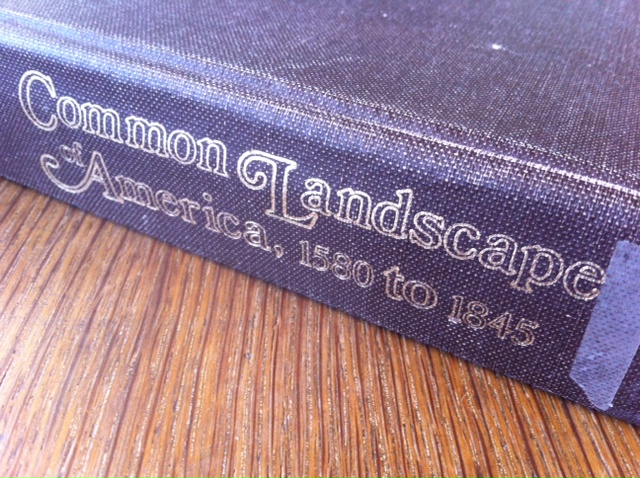 John Stilgoe's Common Landscape of America, 1580 to 1845, is a classic book and required reading of all first year students at the Harvard Graduate School of Design.
John Stilgoe's Common Landscape of America, 1580 to 1845, is a classic book and required reading of all first year students at the Harvard Graduate School of Design.
John Stilgoe's Common Landscape of America, 1580 to 1845, is a classic book and required reading of all first year students at the Harvard Graduate School of Design. I've got an architectural watercolor rendering to do today (Yay!) so I'll keep my part of this post short, but check out the excerpt below from the chapter on the history of schoolhouses on the subject of a book written by Jedidiah Morse in 1789 called The American Geography.The book was an off-the-charts bestseller which coincided with the growing movement, eventually mandated by the "tyrannical" federal government, to educate all American children in communal schoolhouses, almost always one-room affairs which have a fascinating history relative to where they were built (usually the most central place, or on a piece of waste land donated by a farmer, but almost invariably in the most difficult-to-get-to and foreboding locations within each school district). Due to its fortuitous timing, the book had perhaps a disproportionate influence on the opinions of generations of young Americans, and is even given credit for much of the misinformation which started the California Gold Rush of 1849. As Stilgoe sets it up: "Topographical knowledge no longer only derived from topographical experience: Morse filled his books with maps, charts and lengthy prose descriptions of states, regions, rivers, territories, forests, soils and agricultural and mineral riches...Morse emphasized that his information was scientific and reliable, and schoolmasters commanded students to memorize it. Scholars learned that New Hampshire was filled with mountains and cascades, that North Carolina "abounds with medicinal plants and roots"...and that the Spanish Dominions truly needed American improvement." Now here's where it gets crazy (and racist)...




